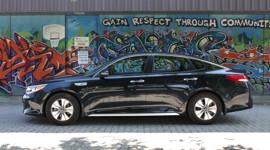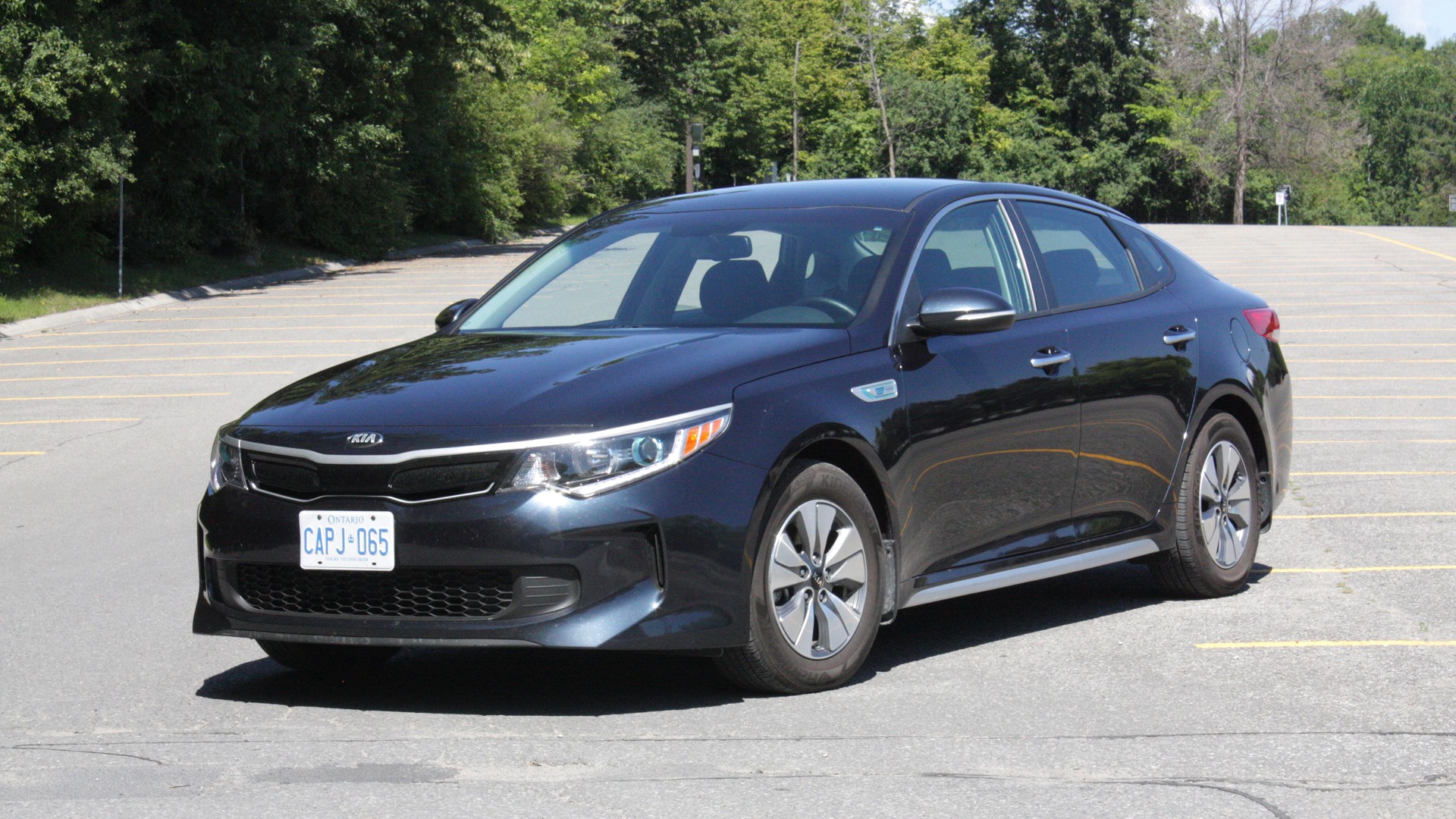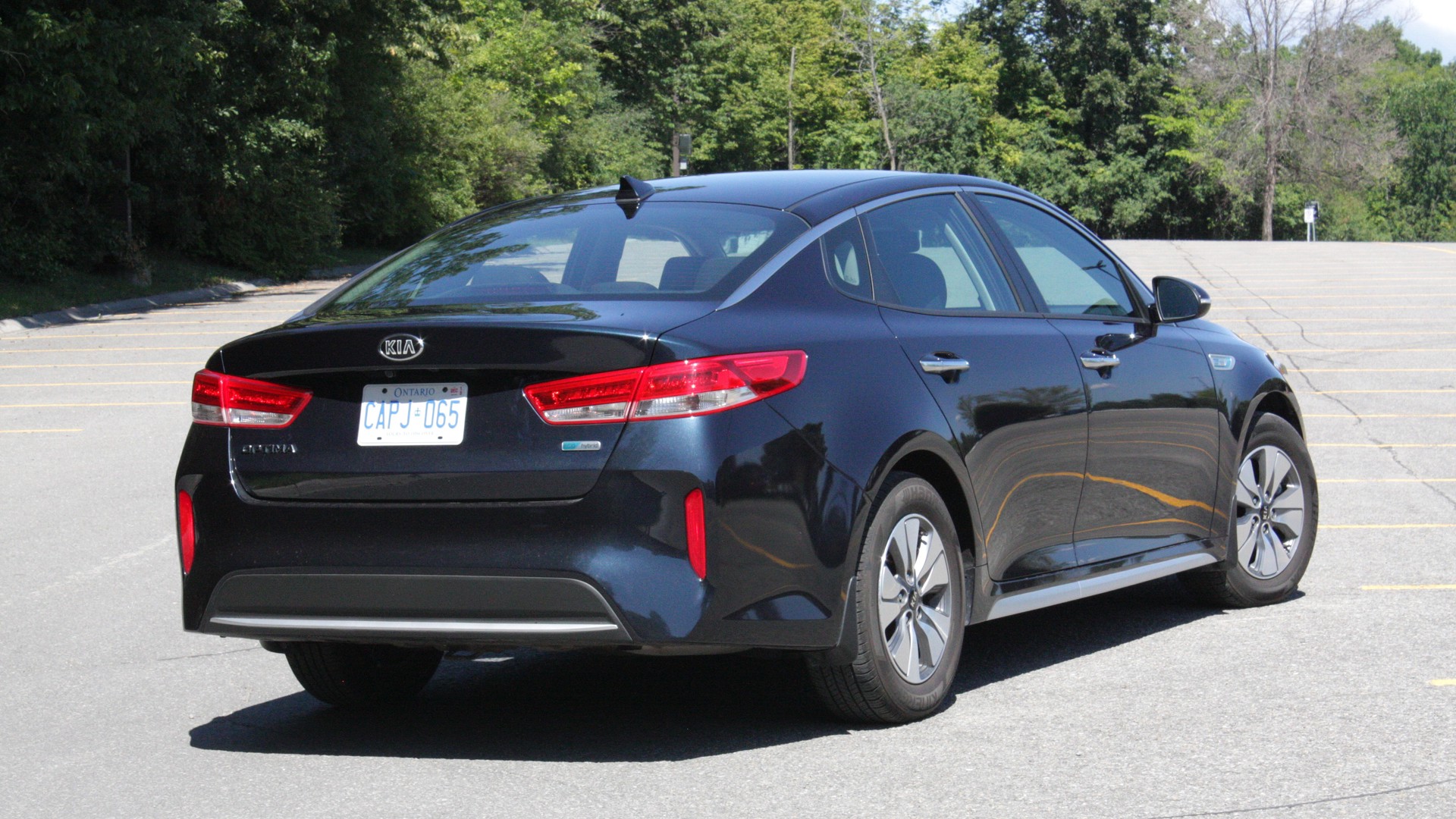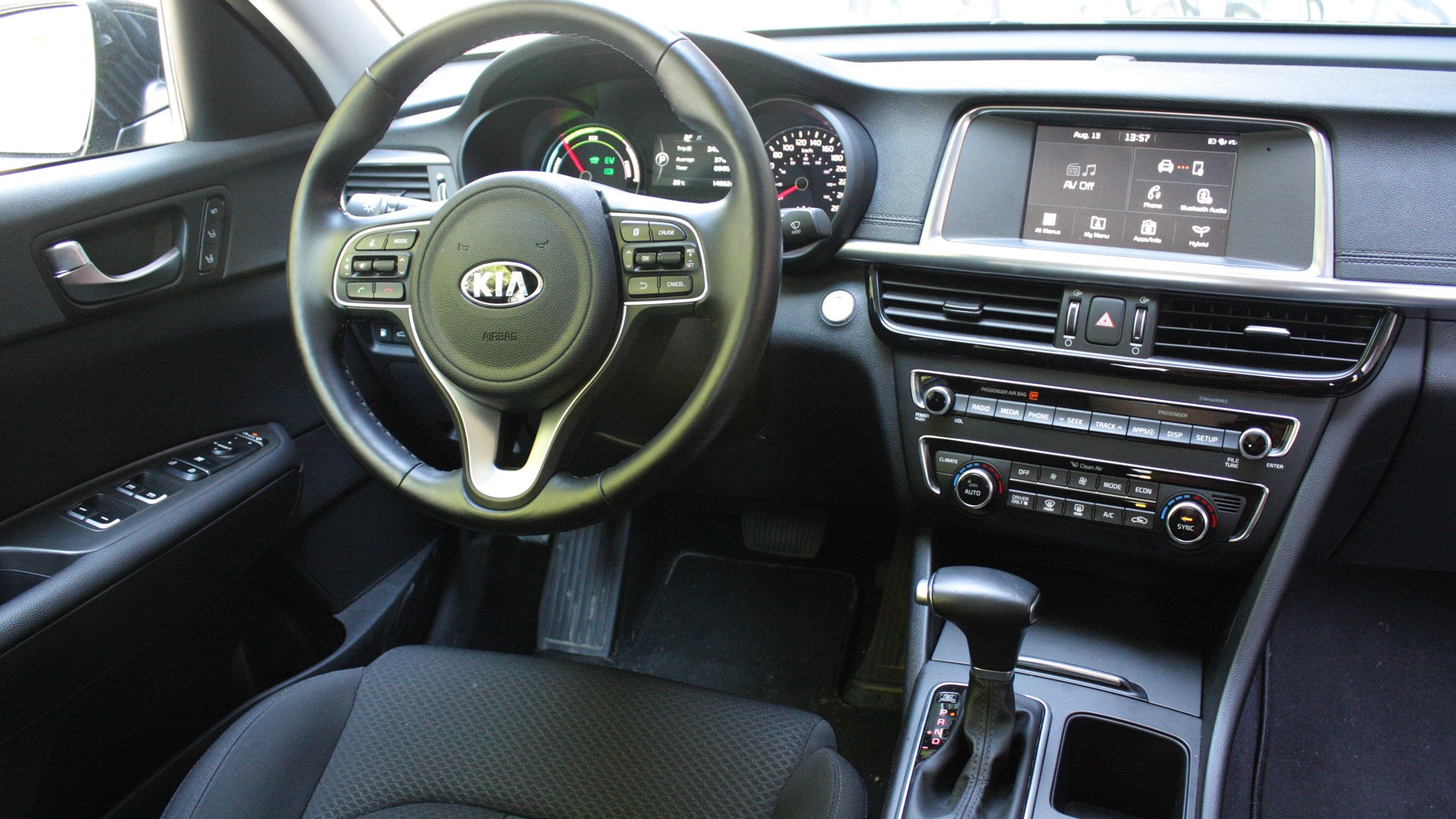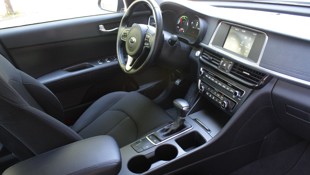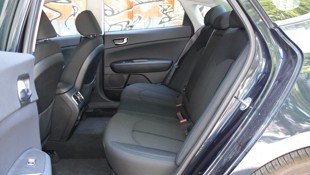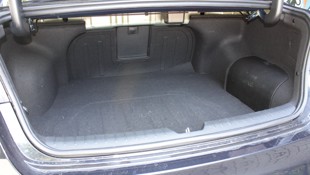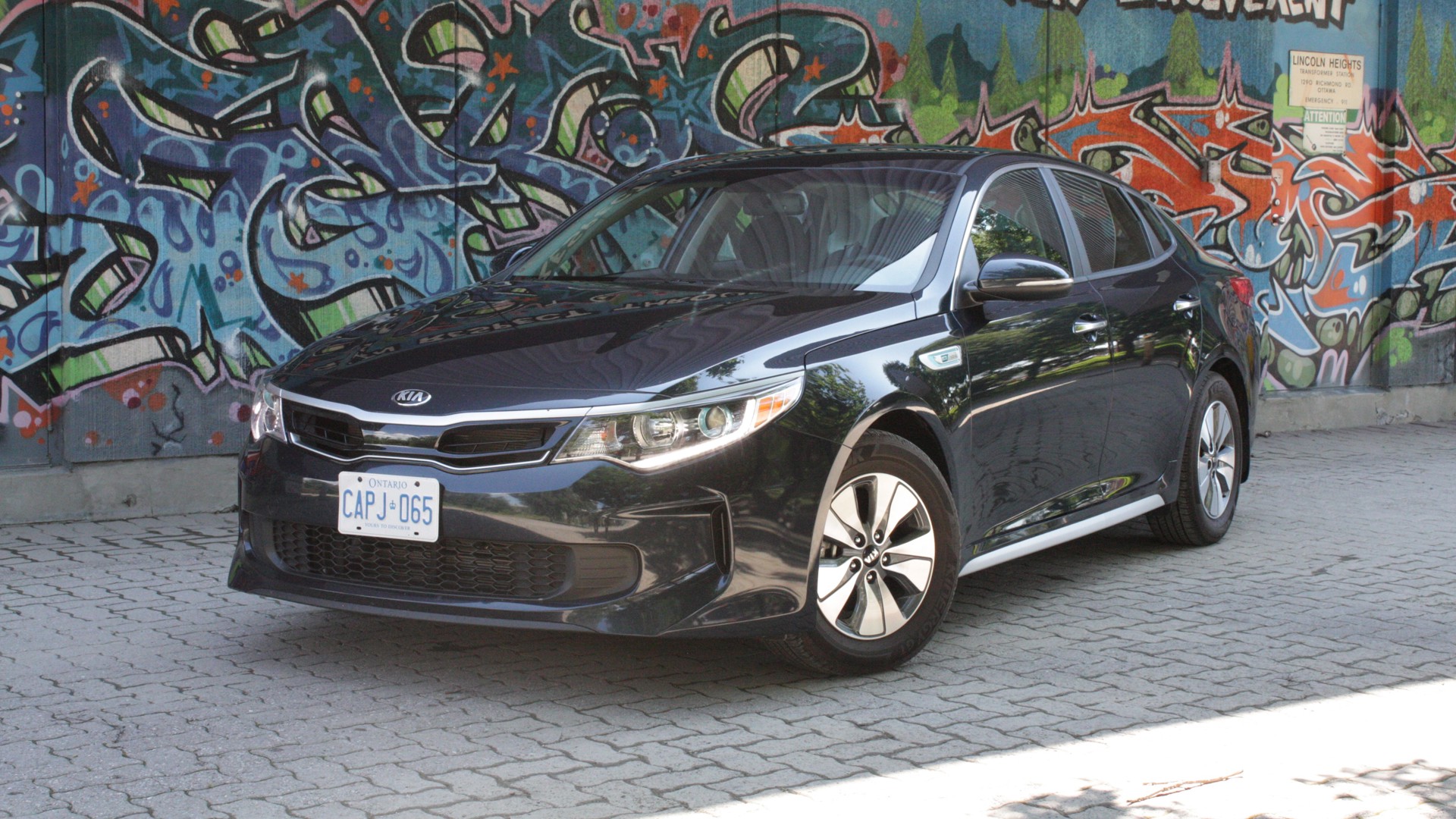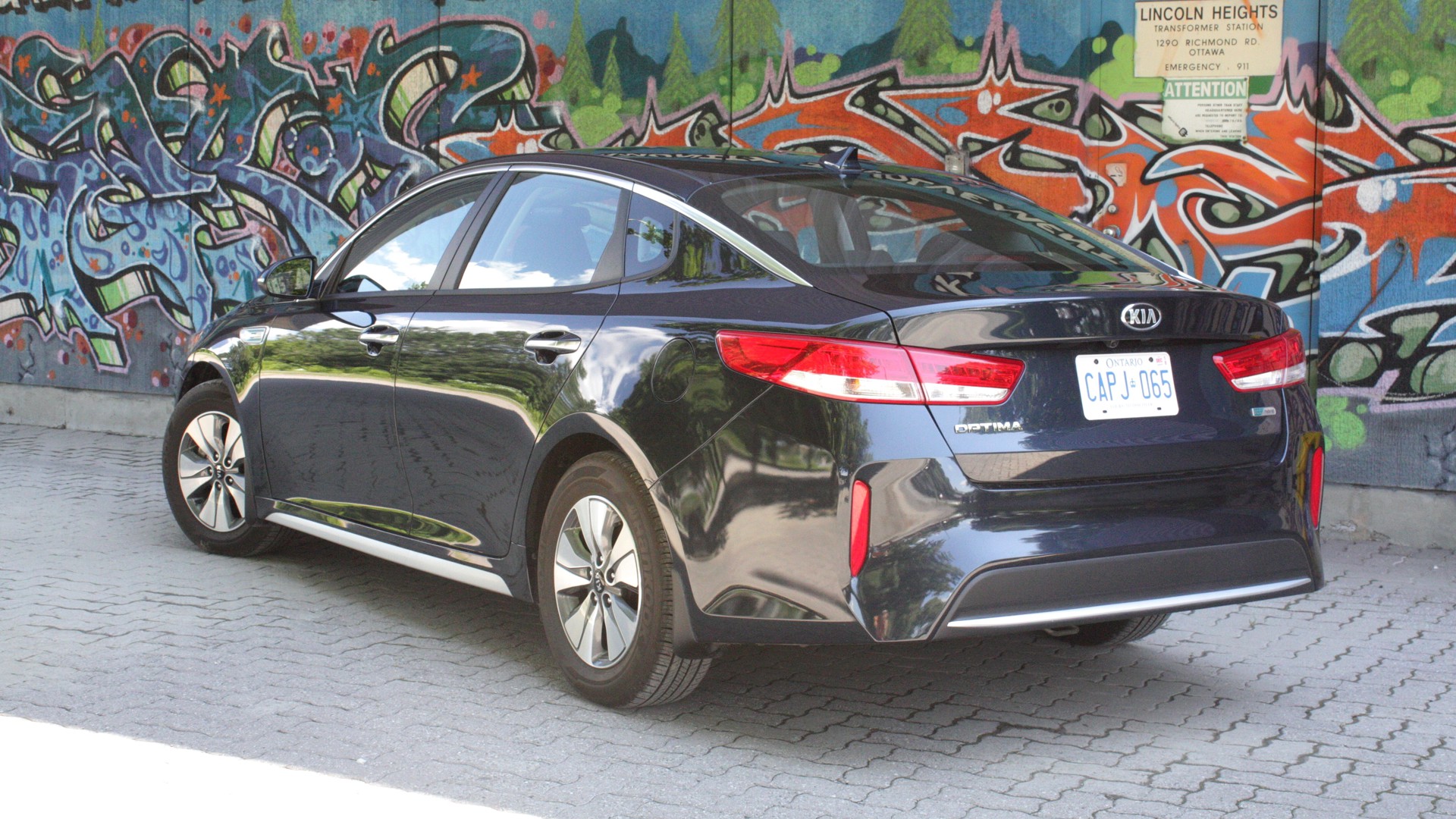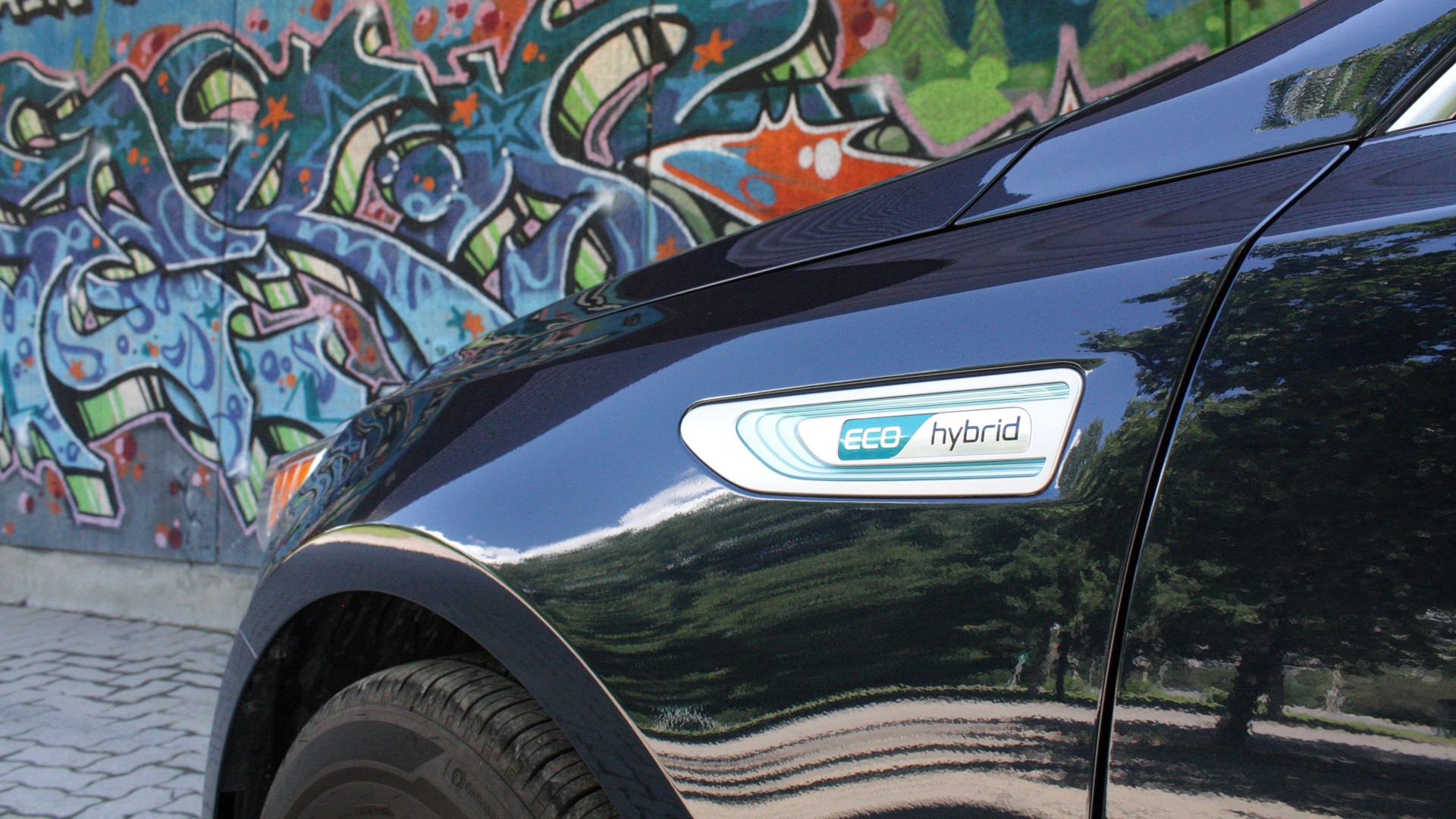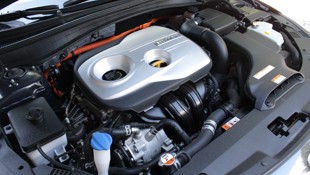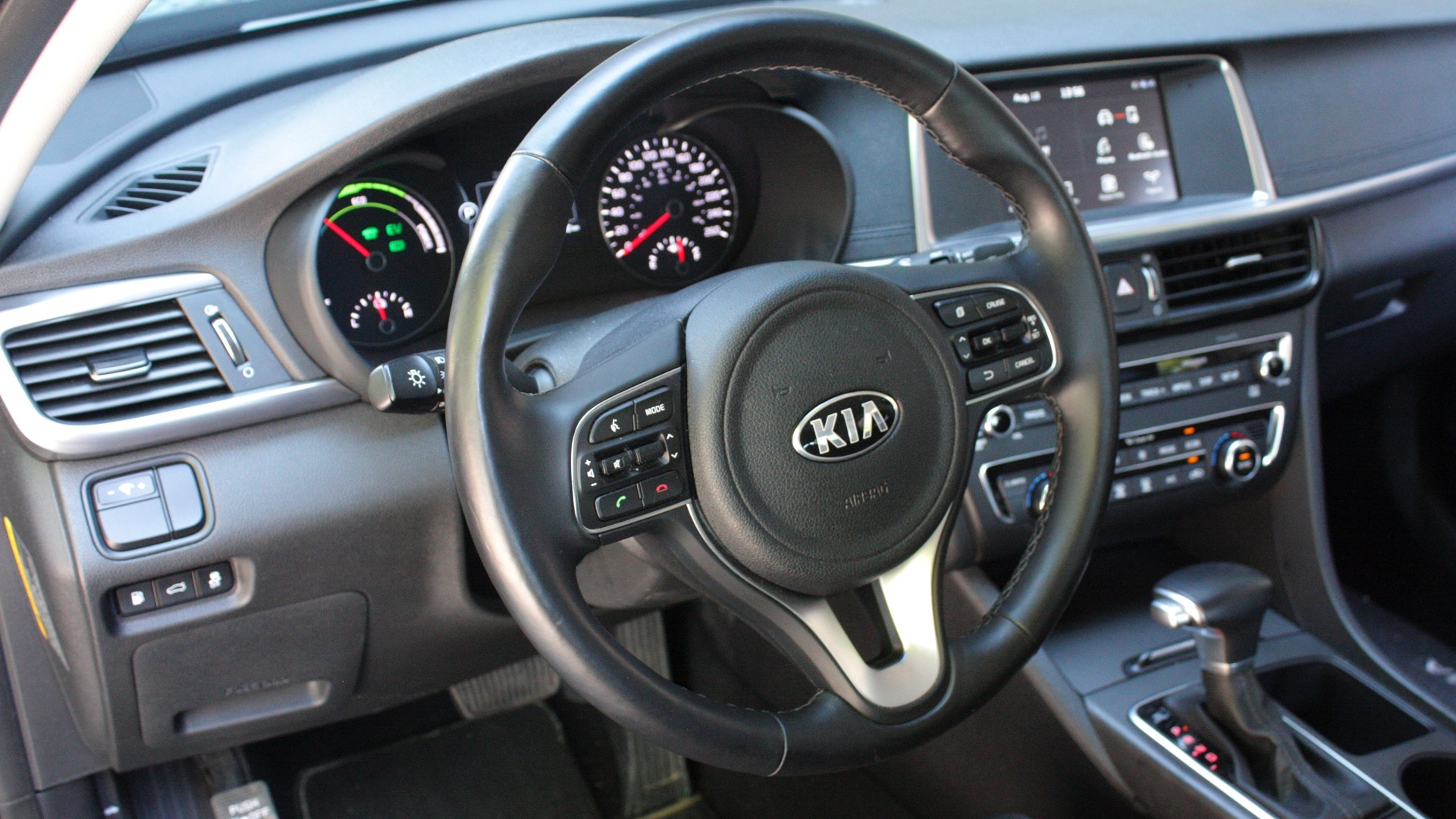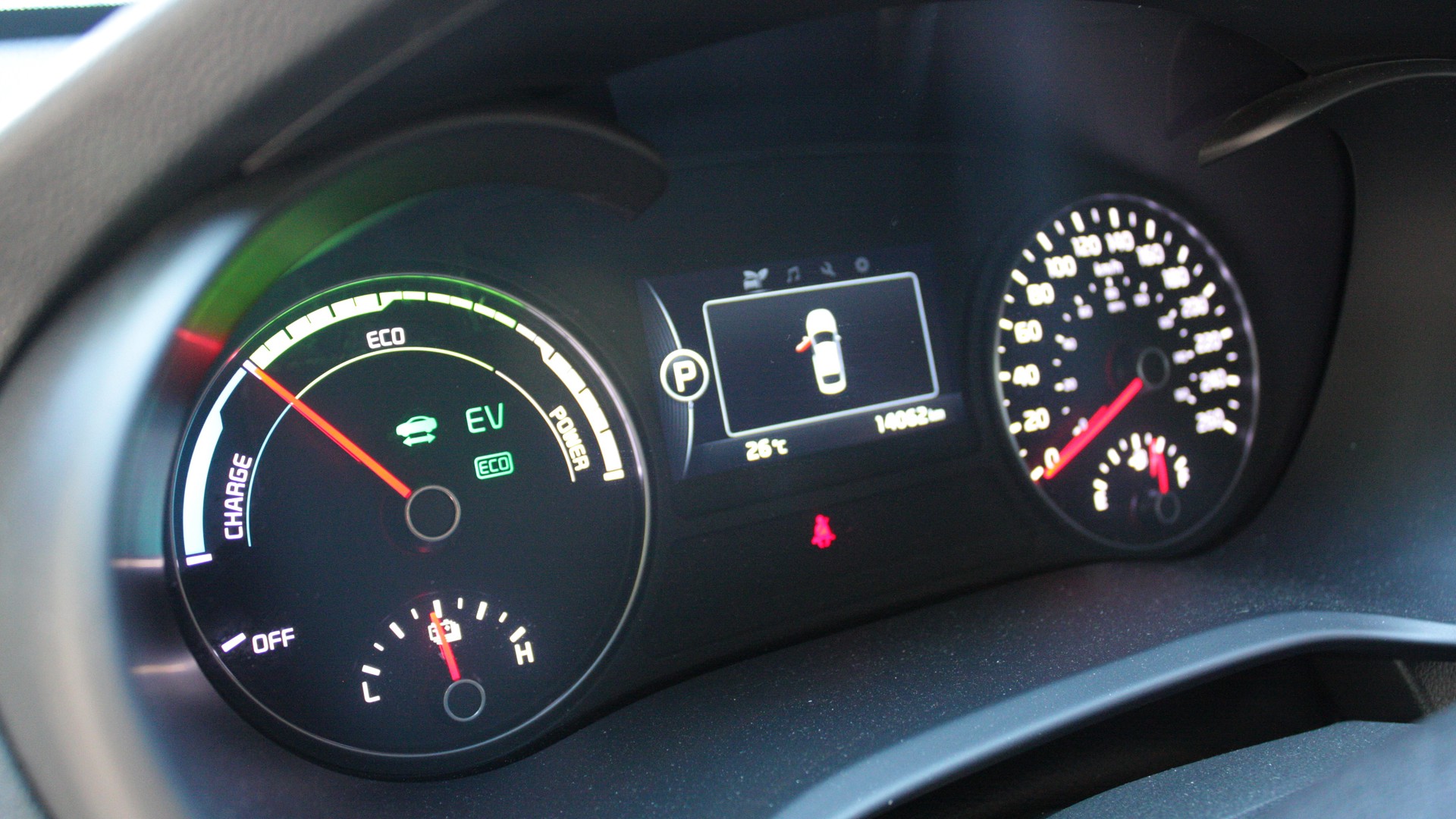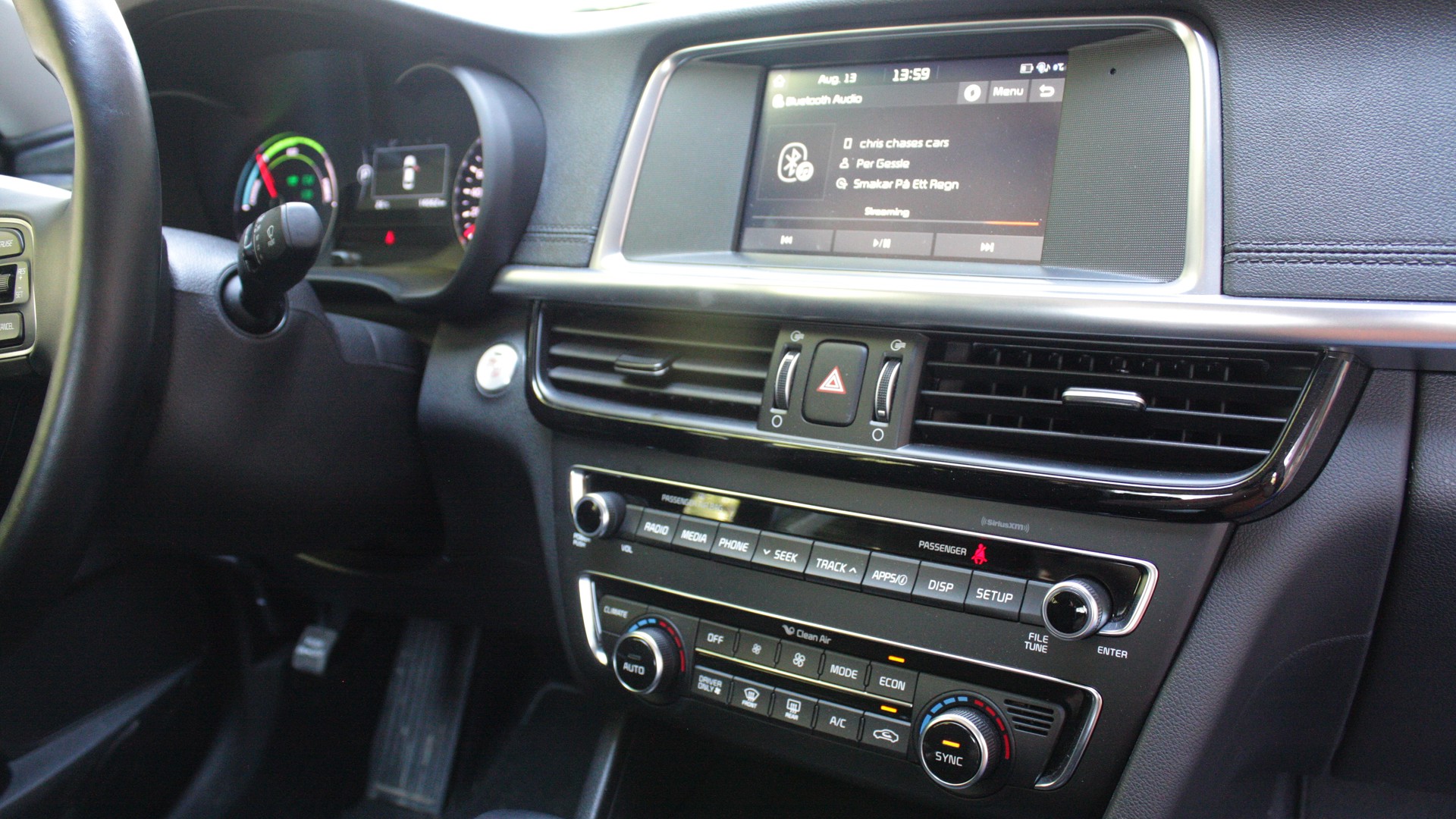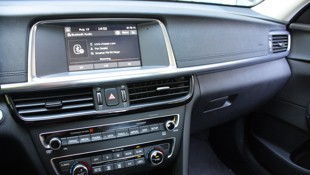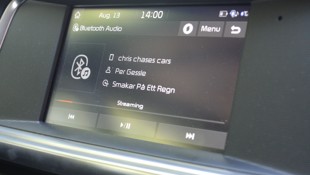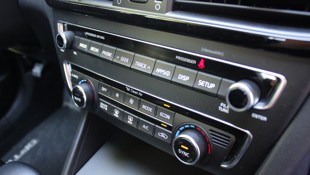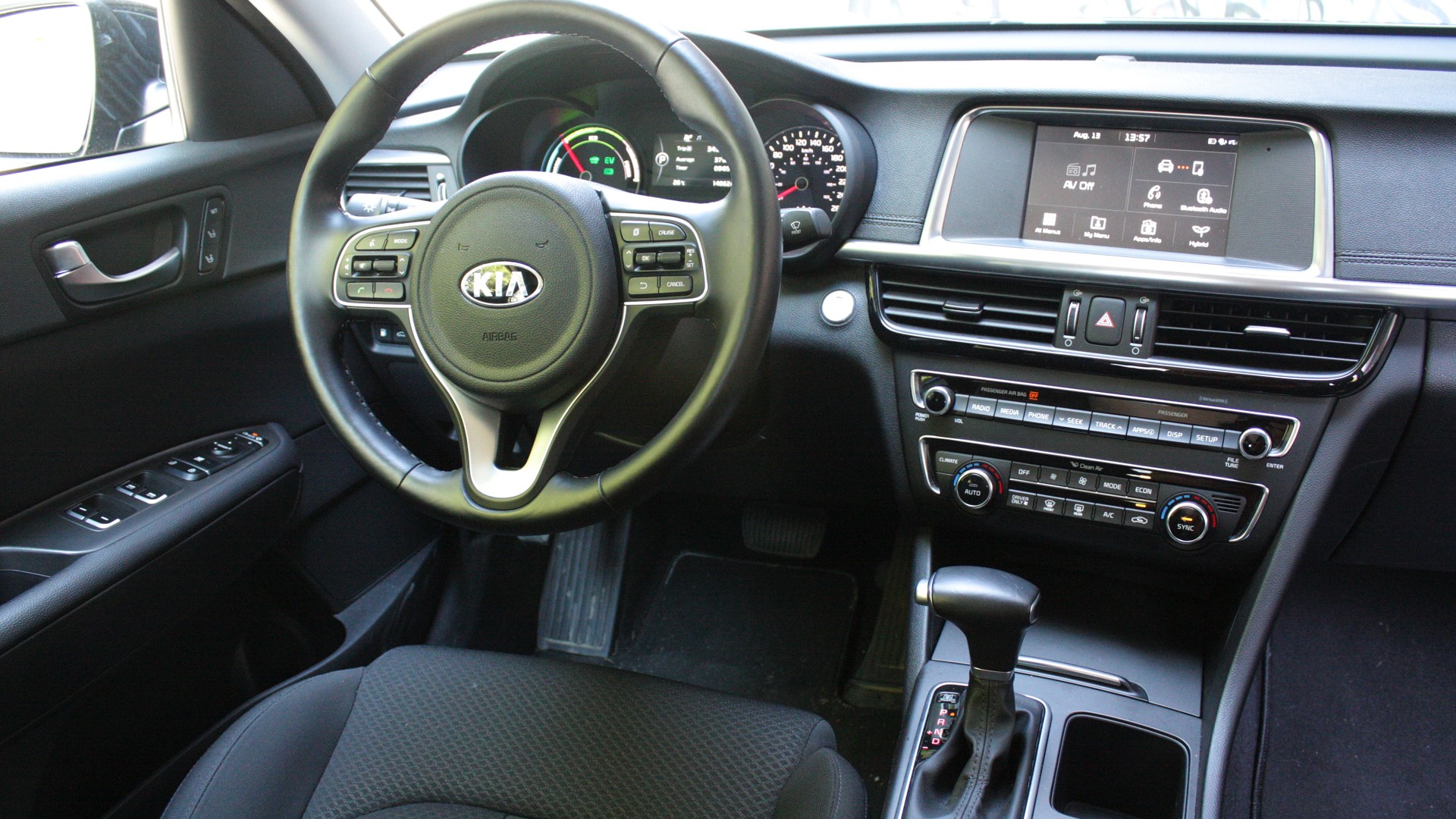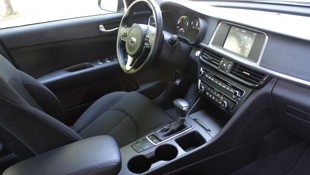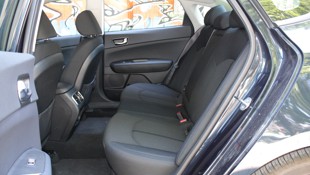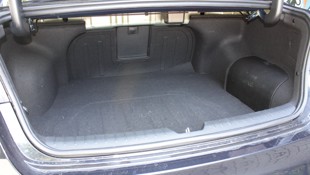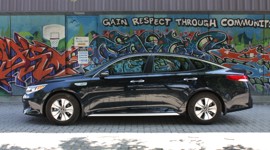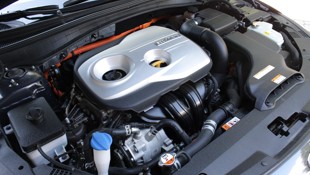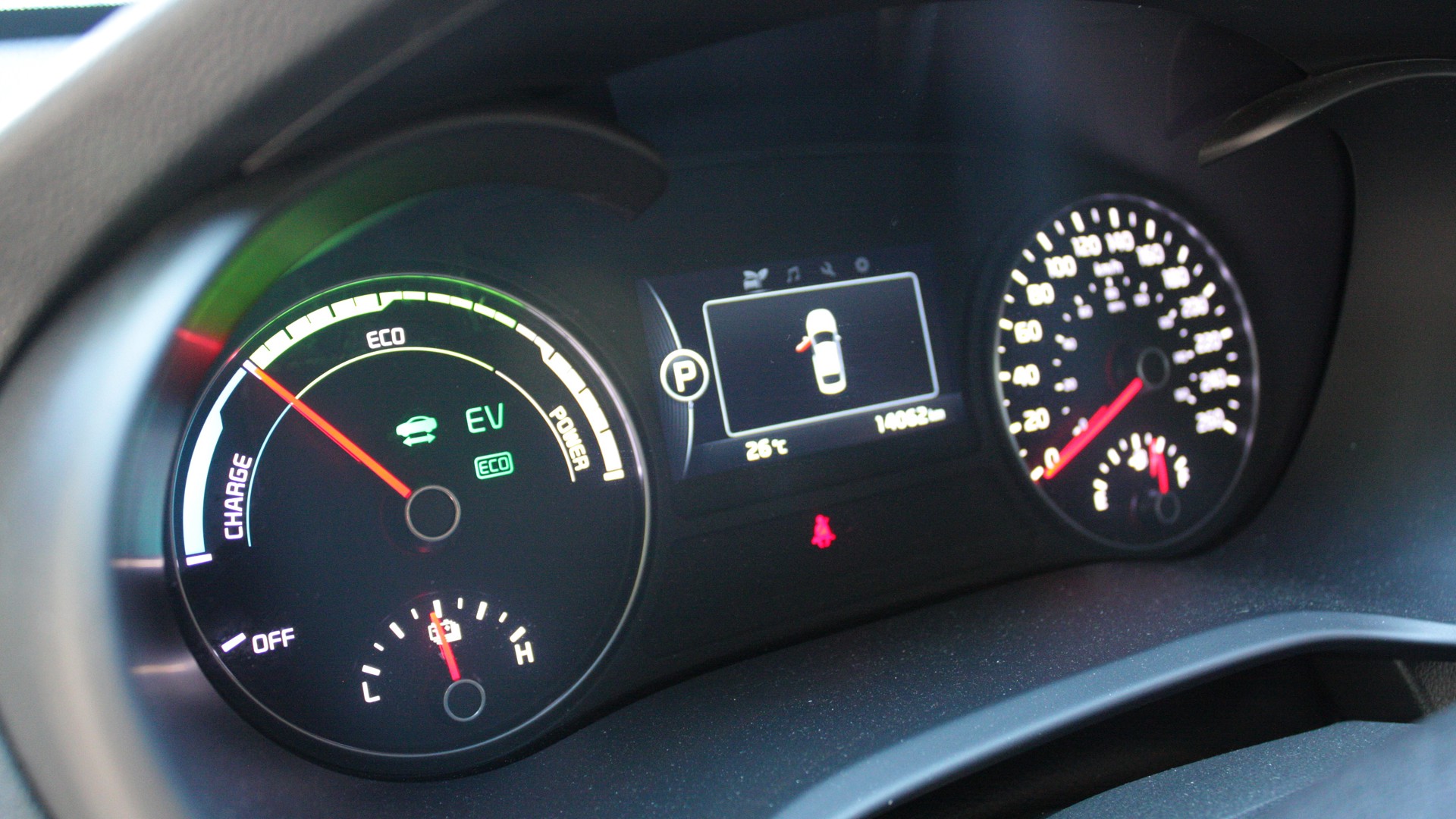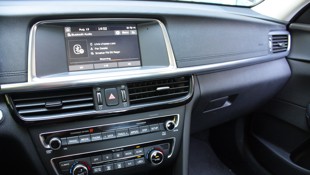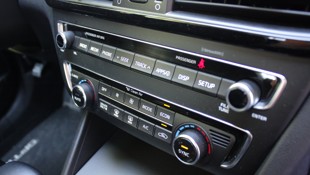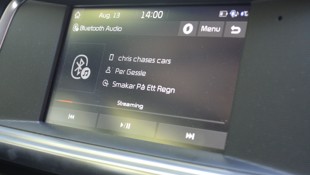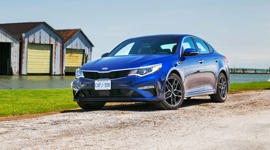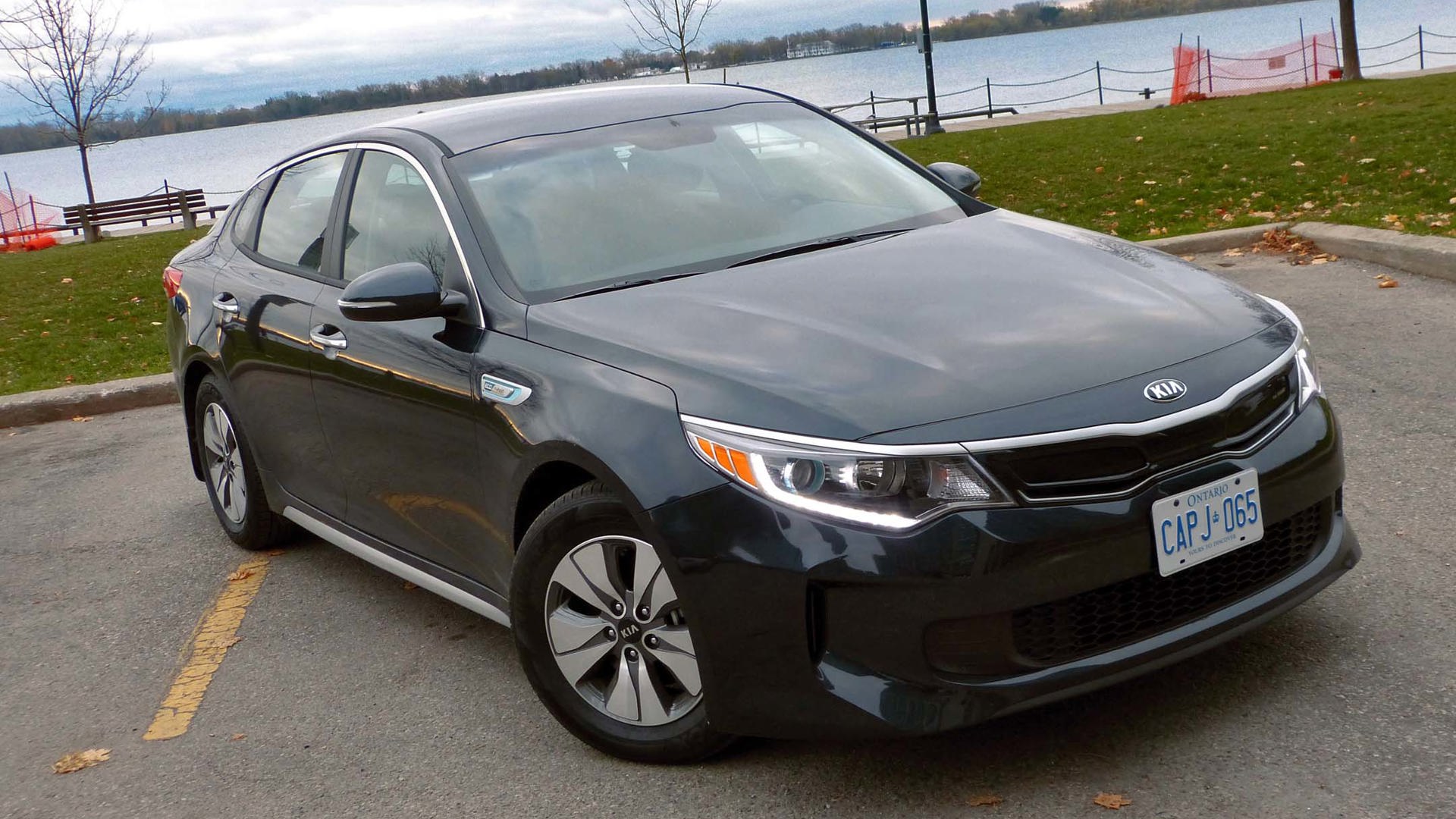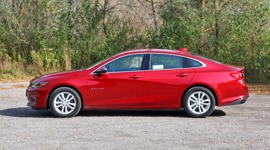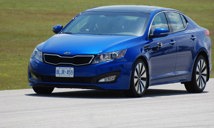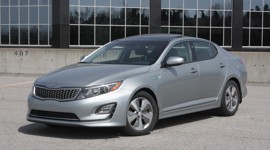 AutoTrader SCORE
AutoTrader SCORE
-
STYLING7/10
-
Safety8/10
-
PRACTICALITY8/10
-
USER-FRIENDLINESS8/10
-
FEATURES6/10
-
POWER8/10
-
COMFORT8/10
-
DRIVING FEEL7/10
-
FUEL ECONOMY9/10
-
VALUE7/10
We’ve all heard by now that the sedan’s demise is imminent. For example, Cadillac plans to cut the number of sedans it sells from four to two by 2019. Conversely, Toyota and Honda, who make two of Canada’s bestselling mid-size sedans and therefore have some serious skin in the game, are hoping that brand-new designs for 2018 will help reverse a downward sales trend for those models attributable to crossovers and SUVs.
Obviously, thrift and economy are the focus here.
Next to those two titans of traditional family transportation, Kia’s Optima is still the new kid on the block. Kia redesigned this roomy four-door into its fourth generation in 2016, and the latest version of the gas-electric hybrid model followed in 2017 with the styling updates introduced the year before. The other news of note is a revised powertrain featuring a smaller battery that fits under the trunk floor, where it doesn’t take up cargo space the way the outgoing hybrid’s bulkier battery did.
That more compact battery still feeds an electric motor that works in concert with a 2.0L four-cylinder engine to generate 192 hp, a nominal seven horsepower more than the 2.4L engine in entry-level gas-only Optimas. Kia doesn’t list a torque total for the hybrid, but its specs tell us the gas engine is good for 140 lb-ft on its own, while the electric motor twists out 151 lb-ft. It only takes a few minutes behind the wheel to know there’s nothing like 291 lb-ft at the other end of the accelerator pedal, but there’s certainly more than the non-hybrid 2.4L’s 178.
Lest you remain of the misguided opinion that hybrid and electric cars are underpowered by definition, let the 2017 Kia Optima Hybrid help disabuse you of that notion. From a stop, the electric motor’s torque will easily squawk the front tires and provide satisfying acceleration at city driving speeds.
One thing Kia (by way of its parent company Hyundai, whose Sonata Hybrid is a mechanical twin to the Optima) does differently from other automakers is pair its hybrid powertrain with a six-speed automatic transmission instead of a continuously variable type (as Toyota and Ford do and Honda kind of does).
That in itself doesn’t have a significant impact on the Optima’s performance – this powertrain varies the proportion of gas and electricity powering the car at any given time, like any other hybrid – but hit the accelerator hard at speed and there’s a notable delay before the car sorts out how to respond and deliver the burst of speed you’ve asked for.
The drive mode button next to the shifter tailors the car’s performance to your preferred driving style. It’s not terribly responsive in eco mode, but it’s the best setting for city driving. Normal and sport modes make for jumpy acceleration from a stop, but are preferable on the highway, where they help make the Optima feel more eager. Annoyingly, the car reverts to eco every time it’s turned off and restarted, no matter your choice of drive mode.
Where some of the Optima Hybrid’s contemporaries let the driver command the car to operate on electricity only (under specific conditions), Kia opts to leave that up to the car, with a telltale in the gauge cluster as your clue the gas engine is taking a break. And that light is often the only clear indication as to what’s going on under the hood, so smooth and quiet is the transition from electricity to mixed power. You won’t hear much from the gas motor unless you really foot it. In a week of city driving, our test car averaged 6.1 L/100 km, nearly matching Kia’s city fuel consumption estimate of 6.0.
Obviously, thrift and economy are the focus here: The Optima Hybrid’s soft ride and dull steering make it clear this car was not designed with sharp handling in mind. Brake feel is better: Hyundai and Kia have done some work to make the transition from regenerative to friction braking fairly smooth.
Get cozy with the fact that this car’s mission is efficiency and not excitement, and then get cozy in its roomy interior: leg- and headroom are generous front and rear, and the front seats feel long-haul comfortable, with 12-way power adjustment and four-way lumbar for the driver in our entry-level LX test car. All we’d change about the back seat is a more upright backrest. The front seats are heated, as is the steering wheel, and dual-zone automatic air conditioning is part of the standard package.
Other niceties at the $29,895 starting price are passive keyless entry with Kia’s smart trunk (stand next to it for a few seconds with the key fob on your person and the trunk lid pops open), power-folding side mirrors that can be set to retract when the car is locked and a back-up camera.
When that camera’s not on, the seven-inch touchscreen is home to Kia’s excellent UVO infotainment system, which is responsive and whose functions are easy to learn.
You can tell the pricier EX and EX Premium trims come with more stuff simply from the numerous blank switch placeholders in the centre console and in the switch bank to the left of the steering wheel. That and the unrelentingly black interior are our only real knocks against the Optima’s cabin.
If you want the latest in active safety, the EX trim gets blind-spot detection and rear cross-traffic alert (among other things) for its $33,595 price tag, and the EX Premium’s features list includes automatic emergency braking, surround-view camera system, adaptive cruise control and lane-departure warning, but at a price that nudges above $39,000. That top trim also gets LED headlights, which would make sense as a standard feature in any car that runs on electricity, as they consume less of it than our test car’s halogens and might conceivably contribute toward a nominal improvement in fuel economy. An electric parking brake is another feature limited to that priciest trim; the clunky foot-operated parking brake in our tester felt out of place.
Despite its recent redesign, the Optima Hybrid will soon face some serious competition from the latest Camry and Accord, both of which will be in showrooms this fall, clothed in sharp new styling and boasting powertrains that promise improved performance and efficiency.
Kia has already begun its own transition away from sedans with the introduction earlier this year of a hybrid crossover called the Niro that will eventually also be offered as a plug-in hybrid and a fully electric vehicle. That’s a good thing, because as pleasant as the Optima Hybrid is, we have a feeling it’s about to be in the unenviable position of being outclassed in a class of car that’s on its way out.
| Engine Displacement | 2.0L |
|---|---|
| Engine Cylinders | 4 |
| Peak Horsepower | 192 hp |
| Peak Torque | 151 lb-ft |
| Fuel Economy | 6.0/5.1/5.6 L/100 km cty/hwy/cmb |
| Cargo Space | 380 L |
| Model Tested | 2017 Kia Optima Hybrid LX |
| Base Price | $29,995 |
| A/C Tax | $100 |
| Destination Fee | $1,560 |
| Price as Tested | $31,655 |
|
Optional Equipment
None
|
|
